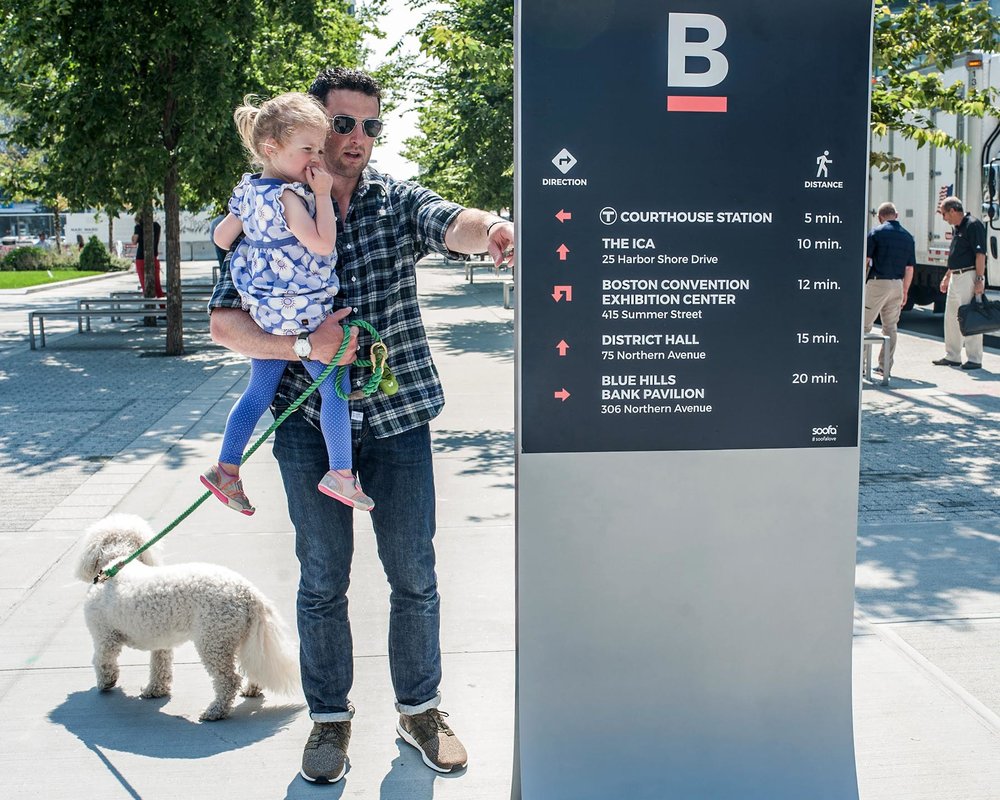Every day, millions of people depend on displays. From checking bus schedules and finding waypoints around a city, to buying goods in a store, to traveling the world, people rely on displays for information on a daily basis.
From the paper theater poster on a light pole to the first black-and-white TVs, displays have evolved in shape, size and material throughout the years, transforming the definition of the word “display.” They have even shrunk to be the smart watches on our wrists, the cell phones in our pockets or college students’ virtual libraries on their e-readers. Although the world continues to change, the basic human need to access and share information will not; as a result, the need for displays will persist.
Looking forward, it’s clear that a more connected world is on the horizon. In fact, according to Frost & Sullivan analysts, the global smart cities market is projected to top $2 trillion by 2025. In the same way that a caveman could not have conceived the bright billboards and video ads that surround Times Square in New York NY today, we can only imagine the possibilities for the future of our own communities and cities. But, to continue to push the boundaries of what a display is, and where information—and design—can be displayed, the right technology must be used. Within smart cities, that technology is ePaper.
Highly adaptable and easily installed, ePaper technology represents an important step forward in providing reliable, outdoor, citywide information for citizens around the globe. Many of today’s ePaper applications have been within handheld devices, or in design and architecture. Beyond the confines of its current applications, however, lies a world of possibilities.
Why ePaper?
Well suited for connected, outdoor environments, ePaper can be integrated into a myriad of applications. It’s created by laminating electrophoretic ink to plastic film and then to electronics, and images and information are displayed by applying electric fields. The resulting thin, flexible and rugged paper-like display is highly visible across a range of lighting conditions. Because ePaper only uses power when changing the image, it’s incredibly energy efficient, and it offers the opportunity to be completely autonomous.
Solar powered: Ecological solutions represent a key tenet of the smart city, providing energy-efficient outcomes for citizens and governments. Imagine this: Your hometown implements a smart-city initiative, aiming to install smart bus stops across the city for travelers to check pickup times and view delays in real time. Bus stops are typically isolated from a power source. However, by utilizing an ePaper solution, the display is solar powered and autonomous, without having to run power cords across or above walkways. Municipal resources wouldn’t be stretched to power that smart feature; rather, it would power itself.
In addition, the displays require minimal maintenance and labor associated with manually changing the information, which results in huge cost savings. This type of display makes public transport more valuable to passengers, potentially increasing loyalty and use, and it saves municipalities money on infrastructure support.
Blend into the environment: ePaper is a reflective display in the same way that paper is; ambient light from the environment is reflected from the surface of the display back to your eyes. As with any reflective surface, the greater the amount of ambient light, the brighter the display looks. Alternatively, LCD displays are light emitting; a backlight must shine through the display for you to see the image. Cities have begun to put limitations on acceptable light pollution, and businesses often struggle to integrate LCDs into their aesthetic or into historical districts. Due to the backlight, LCD displays are often difficult to read in sunlight or bright lighting, and, because they are typically used for advertisements, they tend to be “tuned out” by passersby to whom you would like to convey valuable information.
Future Solutions
Aside from solutions already in use, what possibilities does ePaper hold? The key is to shift perspectives on the definition of “display,” which is typically thought of as a device with the dedicated purpose of displaying images or information. ePaper provides the opportunity to turn any surface into a display, just by using a little creativity.
The only requirement for a display is that it addresses the basic human need of accessing and sharing information. How or where that information is displayed is fluid.
Imagine walking into an airport to catch a flight. Sensors in the building detect the unique identifier in your cell phone; they find your reservation; and the wall in front of you comes alive to display directions to your gate. Imagine students in the classroom. The surfaces of their desks remain dormant until the teacher flips a switch, and then, suddenly, each desk becomes a writable, erasable worksheet.
Because ePaper doesn’t consume power until it has to change images, large surfaces can be interactive pieces. Suddenly, the definition of display is no longer constrained by a physical device; rather, displays can be the environment around you.
The future of smart cities lies within seemingly practical, real-world technology solutions. It just takes a little creativity—and a shift in perspective.
